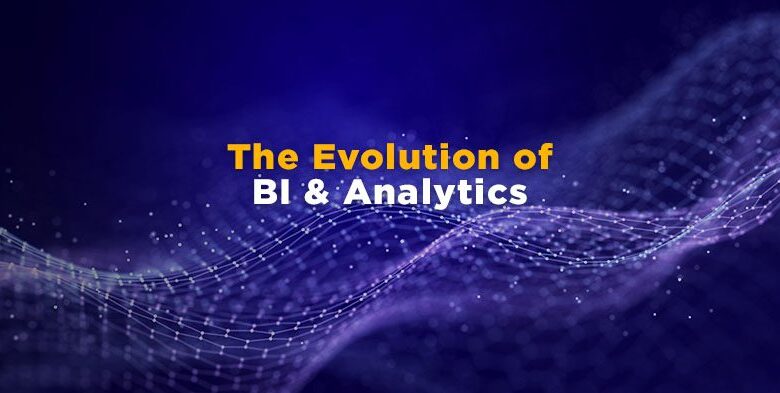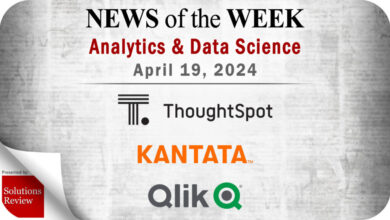The Evolution of Business Intelligence and Analytics

Solutions Review’s Contributed Content Series is a collection of contributed articles written by thought leaders in enterprise tech. In this feature, Zerto (HPE)‘s Director of Technical Marketing Kevin Cole offers commentary on backup, disaster recovery, and cyber recovery and supporting the need for speed.
 In today’s AI-driven landscape, enterprises are inundated with overwhelming amounts of data from a variety of different sources. This data is critical for making smarter, faster business decisions, but effectively harnessing it remains challenging.
In today’s AI-driven landscape, enterprises are inundated with overwhelming amounts of data from a variety of different sources. This data is critical for making smarter, faster business decisions, but effectively harnessing it remains challenging.
This dilemma has given rise to the business intelligence (BI) and analytics market, which according to Gartner, is expected to reach a value of $13 billion by 2025. BI and business analytics are both used to extract and apply insights from big data but there are distinct differences between the functions, despite the terms often being used interchangeably.
As enterprises increasingly invest in BI and analytics technologies, it’s important to understand why each practice was created and how they differ to determine how they can best fulfill unique business needs.
Business Intelligence: A Brief History
Today, BI describes the processes, tools and technologies used to gather, analyze and present data to support business decision-making. However, BI vendors first emerged a few decades ago to help enterprises eliminate silos and improve the accessibility and organization of their data.
In the 1980s, data warehouses became popular, making it significantly easier for people to access data. Data warehouses played a prominent role in the evolution of BI tools as they enabled teams to organize and access data from multiple locations. Soon enough, BI tools were able to analyze and report on data that was stored in data warehouses.
Over the past 30 years, BI has continued to advance and adapt to ever-changing business and data landscapes –– enabling organizations across industries to extract strategic and actionable insights that would have otherwise been unobtainable.
Modern BI primarily assesses historical data to understand past trends and performance. These insights are typically relayed through reports, dashboards or other visuals. BI can also monitor and measure predefined key performance indicators (KPIs) to evaluate performance against the set goals.
Defining Business Analytics
Eventually, systems collected enough data from both historical sources as well as across the organization to make educated predictions. Data quality also increased with centralized data warehouses to create meaningful predictions. These systems became more powerful and as a result, predictions could now be computed either inside the analytical database or even inside the BI tool.
So, after years of BI evolution, business analytics emerged as a vehicle to enable BI.
Business analytics uses data analysis to solve business problems, drive strategic planning, and streamline operational improvements. A range of techniques including descriptive, diagnostic, predictive and prescriptive analytics make up business analytics, with each function contributing to the overall value it provides to enterprises.
While BI concentrates on reporting and visualizing historical and current data to provide a comprehensive view of current business operations, business analytics takes it a step further by using advanced analytical techniques to make predictions and optimize decision-making. Put simply, BI is focused on the present day while business analytics looks to the future.
There are a few other key differences between BI and business analytics. For example, BI relies heavily on structured data while business analytics tools can analyze unstructured and semi-structured data. In addition, since BI is largely descriptive, it’s centered around reporting insights whereas business analytics is focused on the application of insights.
The Best of Both
Leveraging a combination of BI and business analytics is key to making the best, most informed decisions. For example, a healthcare organization might use business intelligence to generate insights into treatment effectiveness, patient outcomes and population health trends by analyzing data from health records or lab results.
The same organization might use business analytics to predict the spread of diseases and the resources and staff that will be necessary for patient care. Business intelligence and business analytics each serve vital purposes on their own but there are major benefits for organizations that utilize both successfully.
BI and Business Analytics in the Age of AI
The recent widespread adoption of AI has completely transformed the technology landscape and the opportunities that AI offers extend to BI and business analytics tools. Now, AI-powered BI and analytics tools are enabling faster discovery and accessibility of valuable insights through chatbots or natural language interfaces for data. AI enhances every step of the BI process from data processing to analysis, and it helps organizations adapt more quickly to changing environments. In healthcare, this means medical staff can uncover insights and patterns sooner, which can lead to life-saving diagnoses.
As AI becomes a larger part of technology and operations strategies across enterprises, consider how it can enhance existing and new BI and analytics tools. Some teams are already leveraging AI to improve their BI and business analytics tools, while some are still struggling to implement AI at scale. Regardless of where you fall on the spectrum of AI use, BI and analytics are foundational components of your business strategy and a combination of both should be implemented to make smart decisions supported by data and ultimately, achieve your goals.



